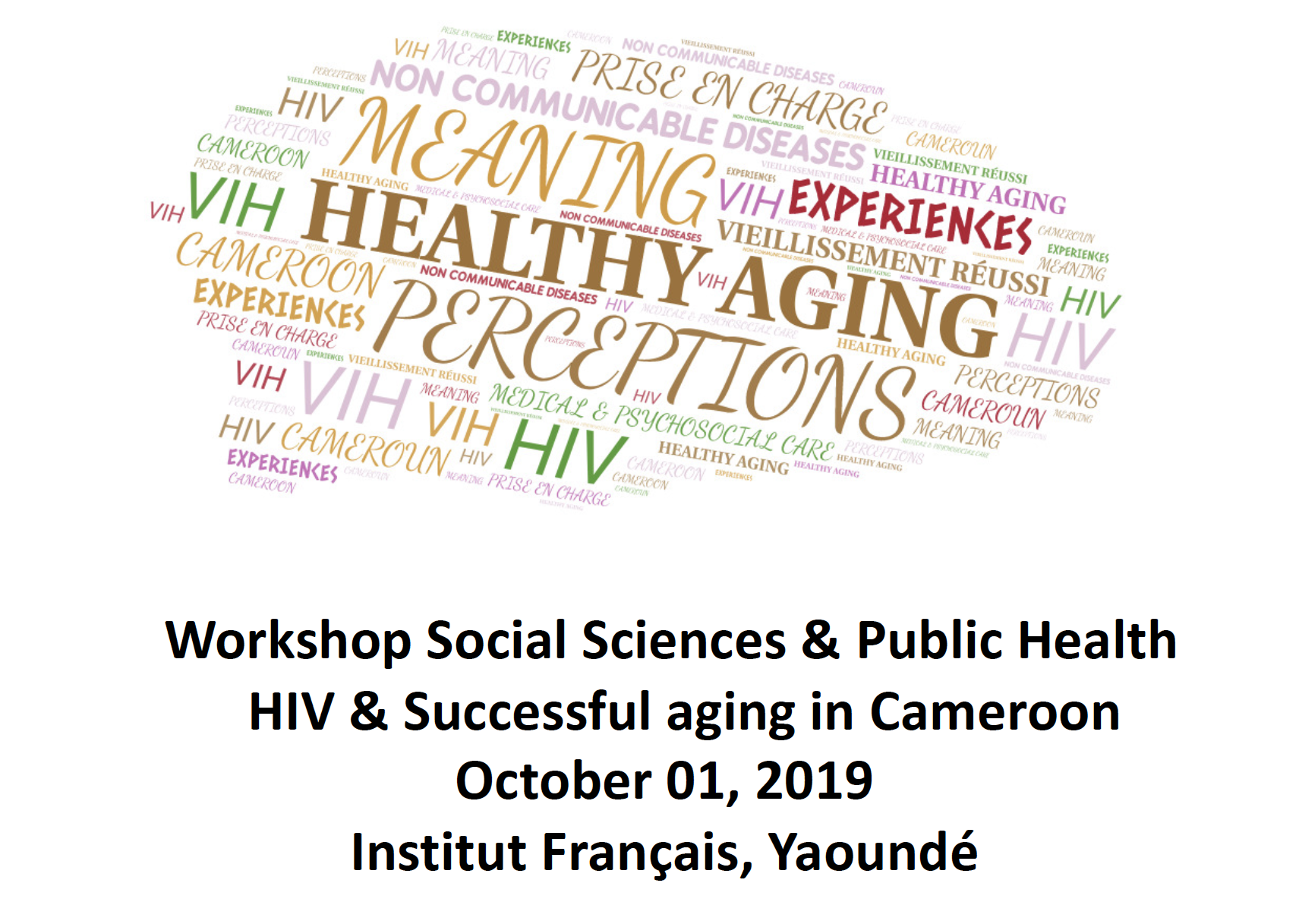
|
Background and rationals The aging of the population is a global biopsychosocial phenomenon that is part of the nature of life. The proportion and absolute number of people aged 50 and over is increasing dramatically in all countries. In sub-Saharan Africa, the "elderly" population has doubled, and this trend is expected to continue, from 46 million elderly people in 2015 to 157 million in 2050 (1). This evolution, combined with the results of the fight against infectious diseases and lifestyle changes, is the basis of the ongoing epidemiological transition in resource-limited countries where noncommunicable diseases (NCDs) are a major public health problem. (2). WHO defines aging not by age class, but by the functional ability of individuals. Each person, following his life course, has an aging trajectory that corresponds to loss of abilities, depending on the environment in which evolves. WHO proposes the concept of "healthy aging" to face the health demand of this growing population faced with the progressive loss of capacity With the improvement of the efficacy of ARV treatments and longer life expectancy, aging with HIV is now a reality, but also a somatic and social experience, individual and collective. This reality calls for a reflection on the dual situation of the medical and psychosocial care of aging HIV positive people. Hence the subject of this call for papers around the following three major axes: Research topics Axis 1. Experiences and meanings of aging In Africa, several social science studies deal with collective representations and the practices of aging (3-4), sometimes at odds with each other. While family solidarity around older people remains fundamental in the process of successful aging, the multiple constraints, linked to the challenges of modernization and the evolution of generational relations, put old models under pressure. This transition, not supported by public institutions and the shortage of retirement schemes, brings into play new configurations of solidarity and can lead to situations of vulnerability and isolation of the elderly. The expected communications could be built around the following specific questions: • What are the experiences of aging and how is the transition to "older person" happening? • What individual, family and social changes do people face? • What are the issues and determinants of traditional generational solidarity and modern social protection systems? • What are the elements of "successful aging" for old people and their significant others?
Axis 2: Experiences and perceptions of aging with HIV The HIV epidemic is over 30 years old. Twenty years ago, access to antiretroviral therapy changed the story of the epidemic by turning a deadly disease into a chronic disease and allowing people living with HIV to experience a life with the infection. Aging is accompanied by a significant risk of noncommunicable diseases (NCDs), which in people living with HIV (PLWH) appears to be increased. Indeed, several studies show that, in PLWH, organ damage, usually associated with aging, occurs earlier, giving rise to an increased risk of comorbidities (5). By examining the dual stigma related to HIV and age and its impact on the social participation of this population with specific needs and health problems, the expected communications in this area could be inspired by the following questions: • What are the experiences of aging with HIV and noncommunicable diseases? • What impact on intergenerational relationships? • What experiences of sharing HIV status, stigma related to age or HIV status? • What is the impact of HIV and aging on sexual behaviors and practices? • How does gender determine life trajectories with HIV and perceptions of aging?
Axis 3: Perceptions and effectiveness of the care system and model for "successful aging" The proportion of older people living with HIV has been increasing since 2007, and this growth is continuing not only because of the success of antiretroviral therapy, which extends the lives of people living with HIV, but also because of the decrease in the incidence among young people and the persistence of risky sexual behavior in the population over 50 years, not targeted by prevention messages (3). In 2016, UNAIDS (4) estimated that 5.7 million (15.5%) people aged 50 and over were living with HIV globally. In Western societies, the policy of "successful aging" is being implemented to cope with the health demand of this growing population faced with the gradual loss of capacities. On the other hand, in resource-poor countries, where health systems are already severely strained by the Test & Treat approach of the HIV epidemic, it is possible that the system will be overwhelmed, showing significant difficulties in managing the additional demand due to comorbidities. The expected papers could be inspired by these specific questions: • What is the current effectiveness of health and social care for older people living with HIV? • How is it perceived by beneficiaries, families and caregivers? • What degree of HIV integration in geriatric services and age-related issues in HIV care services? • What model (s) of health service for older people living with HIV is acceptable and effective to meet their needs? Bibliography (1) World report on aging and health. Geneva 2015. (2) Beaglehole R, Bonita R, Alleyne G et al. A High-Level Meeting on Non-Communicable Diseases: The NCD Action Group. Lancet 2011; 378: 449-55. (3) Nowik L and Lecester-Rollier B. (Dir). Aging in the South. Family solidarities with the test of aging. Ed Karthala 2015. (4) Erdmute A, Van der Geest S, Reynolds Whyte S. (Eds.). Generations in Africa. Connections and conflicts. Lit Verlag Berlin 2008. (5) High KP, Brennan-Ing M, Clifford DB, et al. HIV and aging: state of knowledge and areas of critical need for research. Report to the NIH Office of AIDS Research by the HIV and Aging Working Group. J Acquir Immune Defic Syndr 2012; 60 (suppl 1): S1-18 Partners
|


